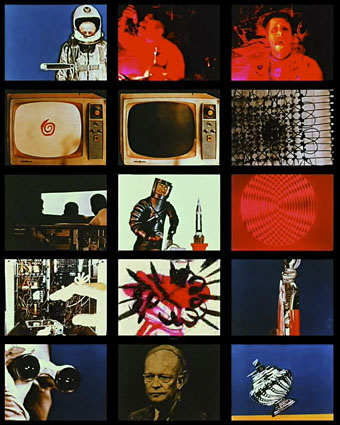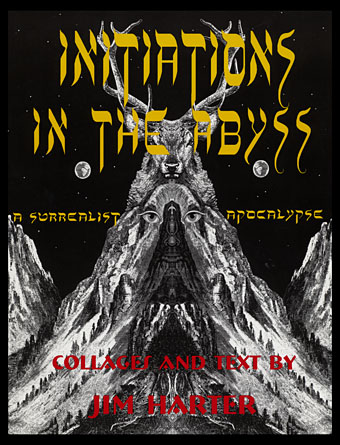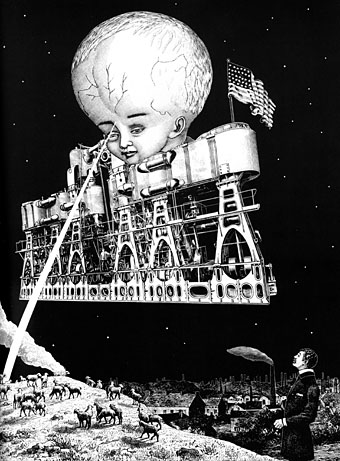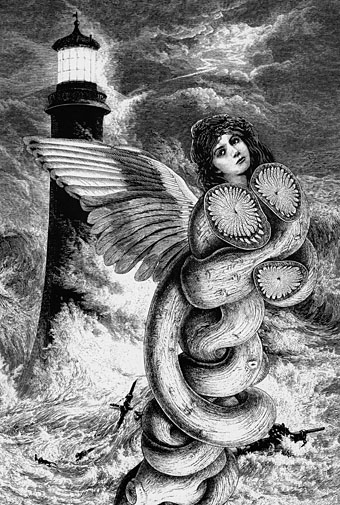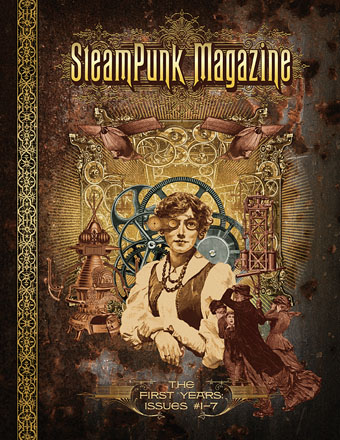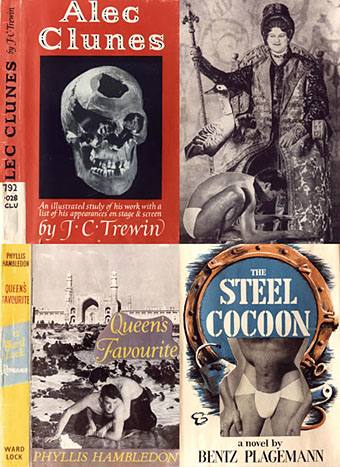
I was going to title this post “Fucked by Monty” but thought that might give the wrong impression. The phrase was one of several titles added to the cover of The Collected Plays of Emelyn Williams by Joe Orton and Kenneth Halliwell when they were happily defacing the books of Islington Library, London, in the early 1960s. Despite the outrage of the librarians at the vandalism most of the defaced books were put aside and are now prized items in Islington’s collection. This week the library announced an exhibition of the books, Malicious Damage: The crimes of Joe Orton and Kenneth Halliwell. The Guardian has a gallery of the covers here (and there’s more at Joe Orton central), rare examples of what might be called “guerilla collage”.
In addition to tarting up boring cover designs, Orton and Halliwell also typed their own descriptions of some the books’ contents. Gollancz volumes were apparently good for this since the publisher left the inside of their famous yellow dust jackets blank. John Lahr in Prick Up Your Ears gives an example from a Dorothy L Sayers novel which is also read out in the 1987 film adaptation:
When little Betty Macdree says that she has been interfered with, her mother at first laughs. It is only something the kiddy has picked up off television. But when sorting through the laundry, Mrs. Macdree discovers that a new pair of knickers are missing she thinks again. On being questioned, Betty bursts into tears. Mrs. Macdree takes her to the police station and to everyone’s surprise the little girl identifies P.C. Brenda Coolidge as her attacker. Brenda, a new recruit, denies the charge. A search is made of the Women’s Police Barracks. What is found there is a seven inch phallus and a pair of knickers of the kind used by Betty. All looks black for kindly P.C. Coolidge…. What can she do? This is one of the most enthralling stories ever written by Miss Sayers.
It is the only one in which the murder weapon is concealed, not for reasons of fear but for reasons of decency!
READ THIS BEHIND CLOSED DOORS. And have a good shit while you are reading!
Alan Bennett wrote the screenplay of Prick Up Your Ears and that line about “It is only something the kiddy has picked up off television” could well have been one of his own. Orton said that when the pair ended up in court the greatest outrage was shown not towards their obscene amendments but to simple bits of Surrealism such as the adding of a monkey’s face to the cover of Collins Guide to Roses. Schoolboy humour is understandable but don’t dare do something that makes no apparent sense.
Malicious Damage is a free exhibition and runs until January, 2012.
Previously on { feuilleton }
• Joe Orton Online
• Joe Orton


